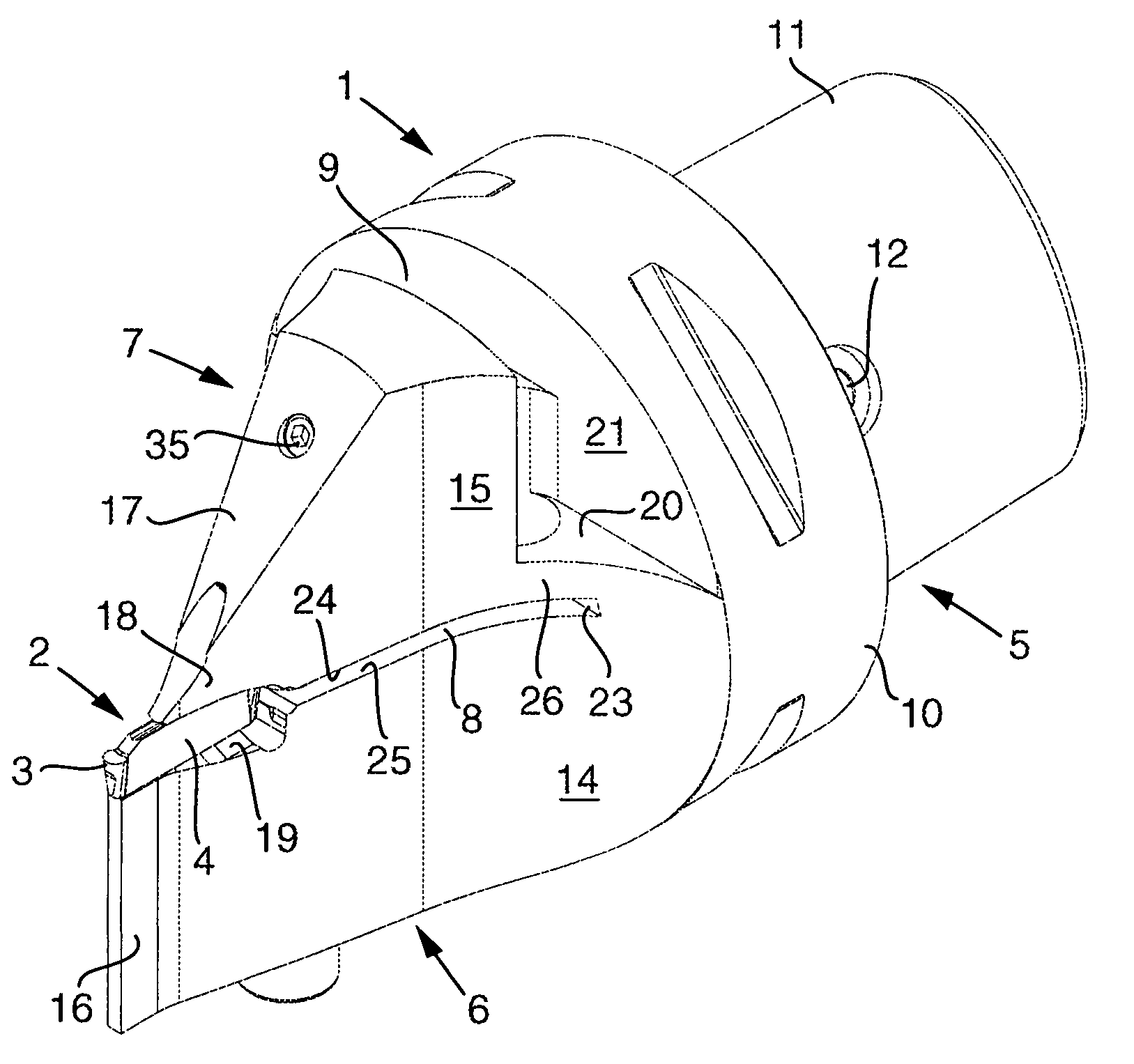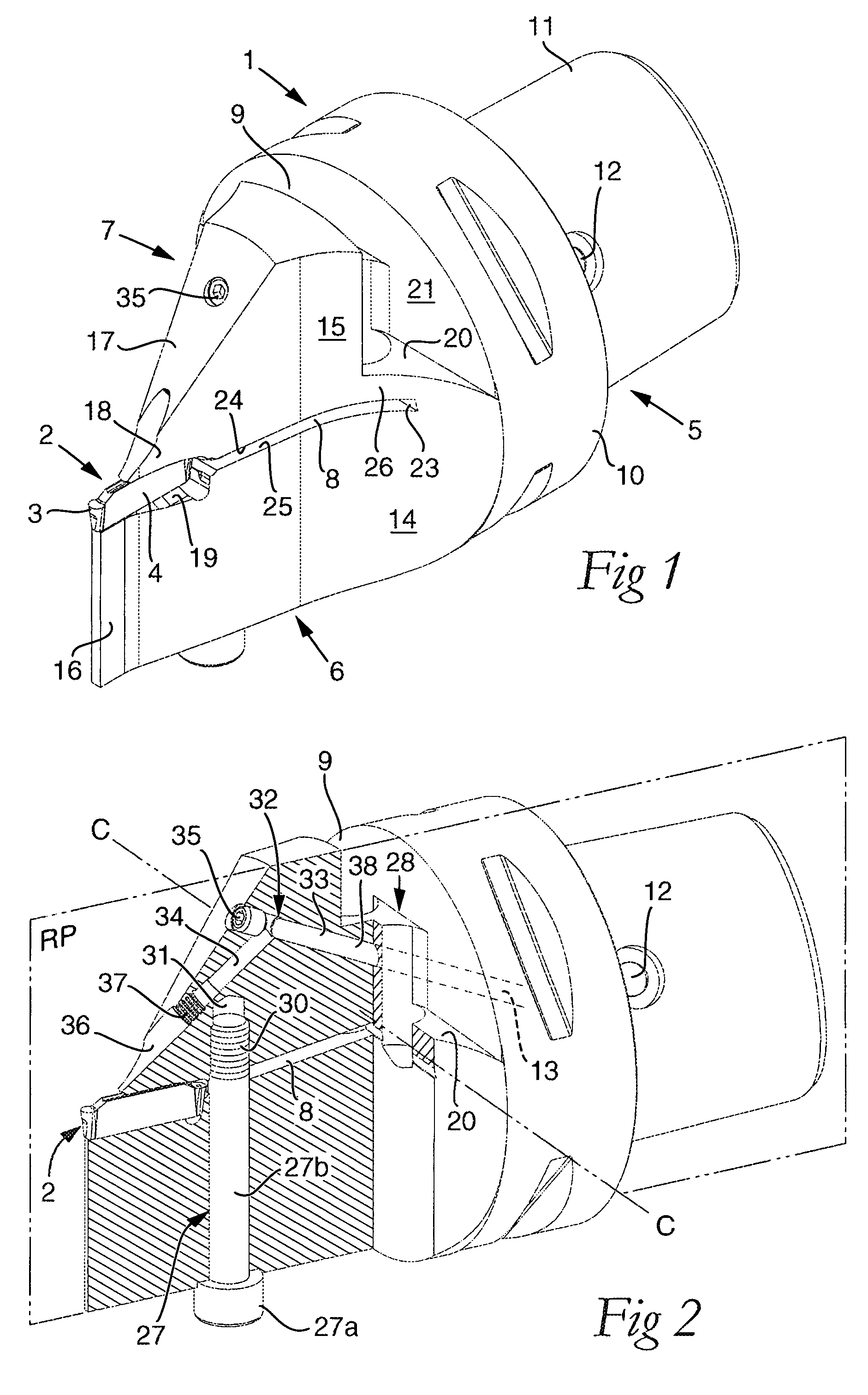Tool for chip removing machining and a basic body therefor
a technology of chip removal and tooling, which is applied in the direction of cutting inserts, manufacturing tools, shaping cutters, etc., can solve the problems of inefficient and almost provisional cooling of previously known turning tools of the kind in question, and the difficulty of efficient cooling of cutting inserts
- Summary
- Abstract
- Description
- Claims
- Application Information
AI Technical Summary
Benefits of technology
Problems solved by technology
Method used
Image
Examples
Embodiment Construction
[0019]The turning tool shown in FIGS. 1-5, which in practice can be used for parting, grooving and profile turning, includes two main components, viz. a basic body in its entirety designated 1, and a replaceable cutting insert 2. In this case, the cutting insert 2 has an elongate basic shape and is indexable in two positions by including a pair of opposite, circular cutting edges 3, which are formed on round material portions having a downwardly tapering shape. The flat intermediate portion 4 of the cutting insert, which extends between the two opposite ends, has a thickness that is smaller than the diameter of the cutting edges 3.
[0020]Suitably, the cutting insert 2 is manufactured from cemented carbide or another hard and wear-resistant material, while the basic body 1 is manufactured from steel or an equivalent material of the type that has at least a certain inherent elasticity.
[0021]The basic body 1 includes a rear fixing part 5, a front supporting part 6, and a tightening part...
PUM
| Property | Measurement | Unit |
|---|---|---|
| pressure | aaaaa | aaaaa |
| pressures | aaaaa | aaaaa |
| obtuse angle | aaaaa | aaaaa |
Abstract
Description
Claims
Application Information
 Login to View More
Login to View More - R&D
- Intellectual Property
- Life Sciences
- Materials
- Tech Scout
- Unparalleled Data Quality
- Higher Quality Content
- 60% Fewer Hallucinations
Browse by: Latest US Patents, China's latest patents, Technical Efficacy Thesaurus, Application Domain, Technology Topic, Popular Technical Reports.
© 2025 PatSnap. All rights reserved.Legal|Privacy policy|Modern Slavery Act Transparency Statement|Sitemap|About US| Contact US: help@patsnap.com



